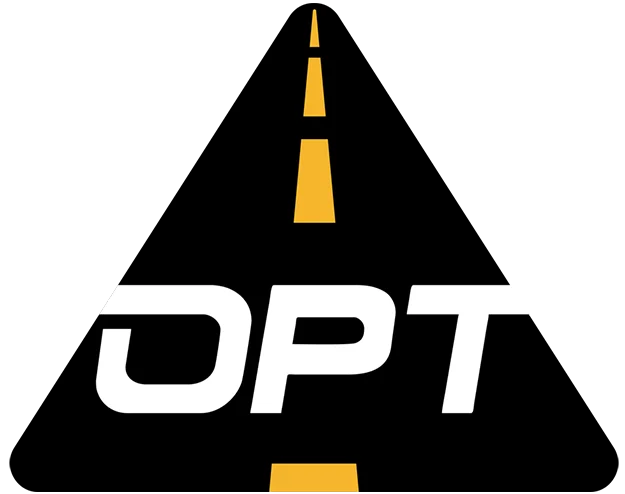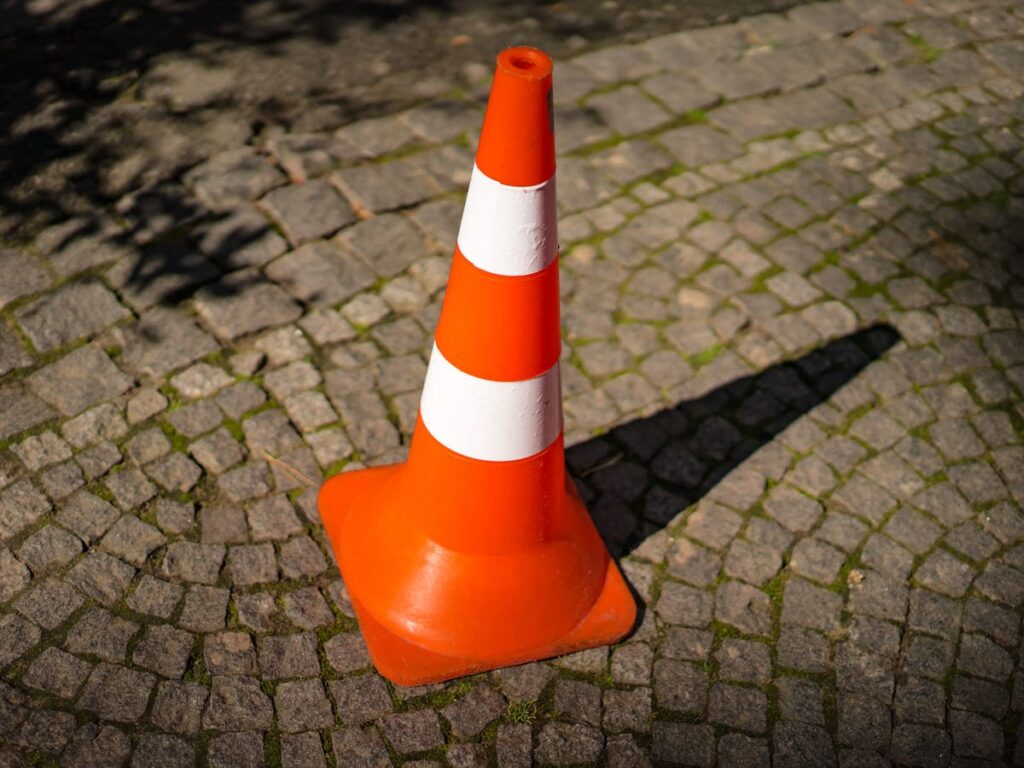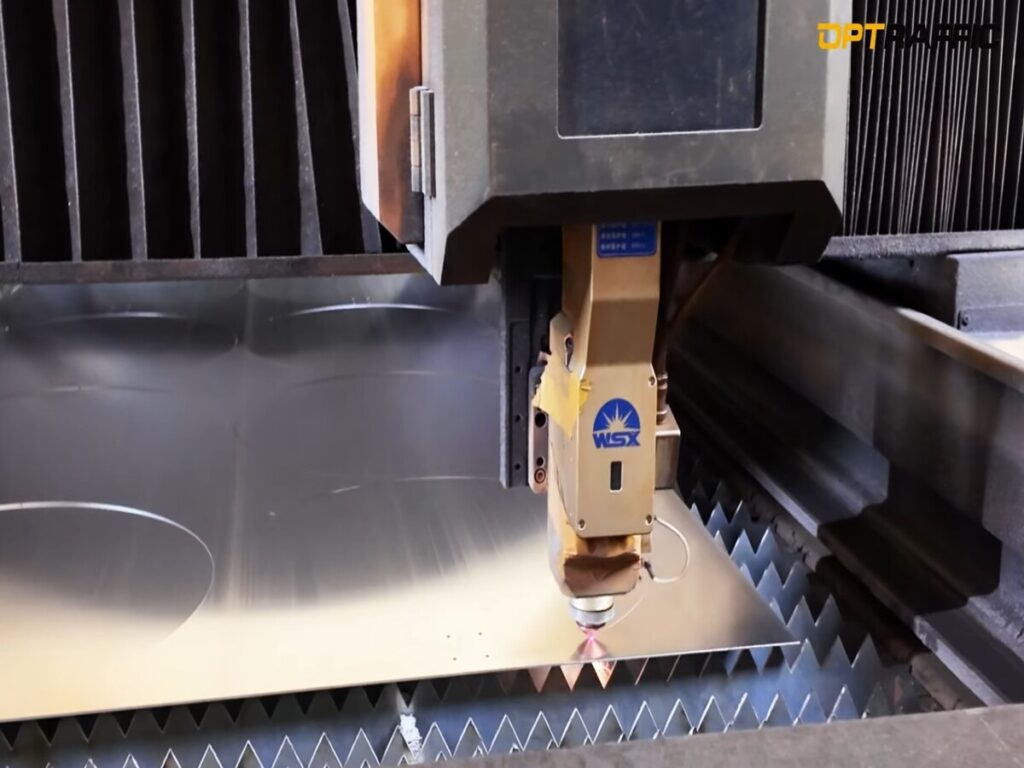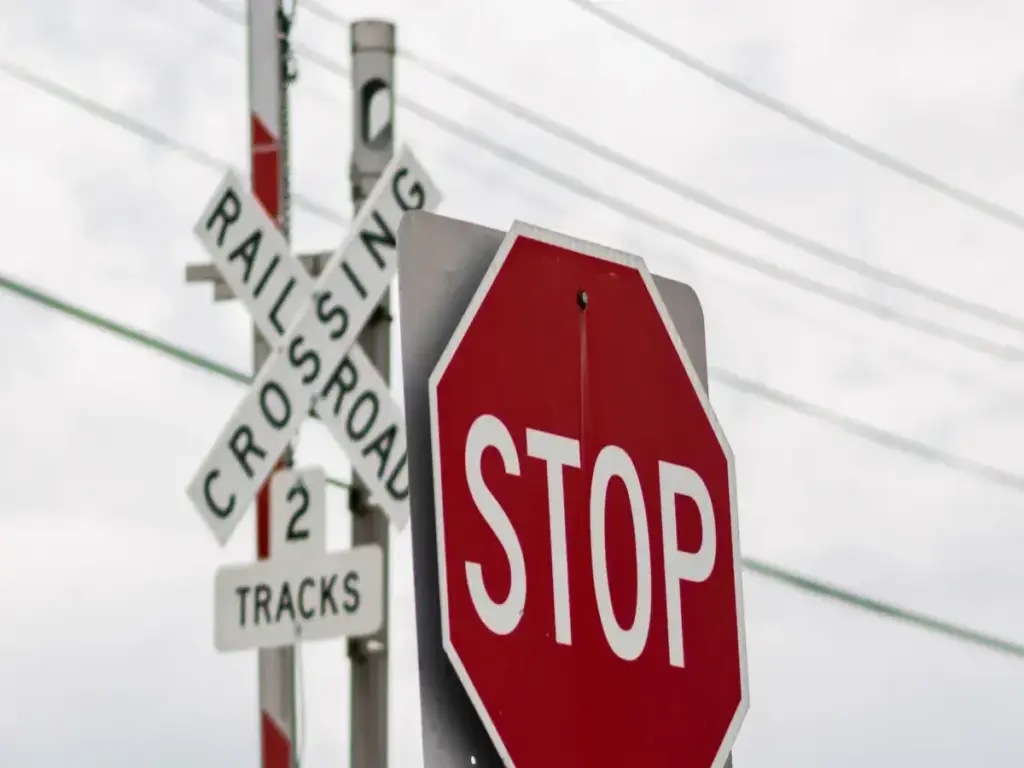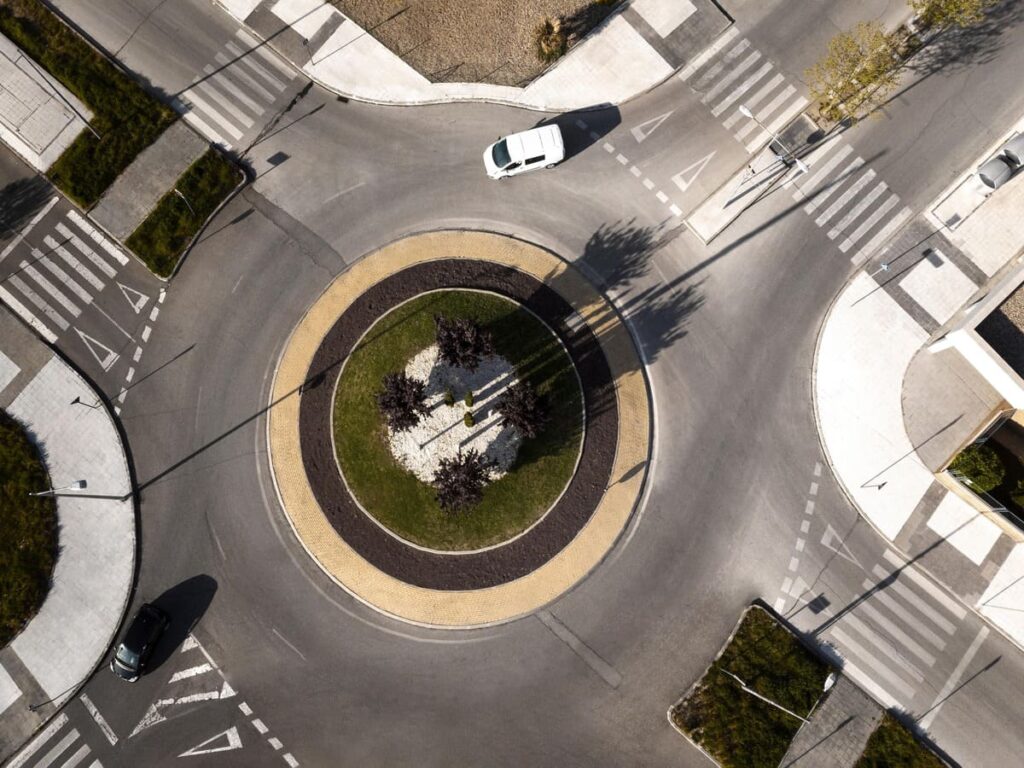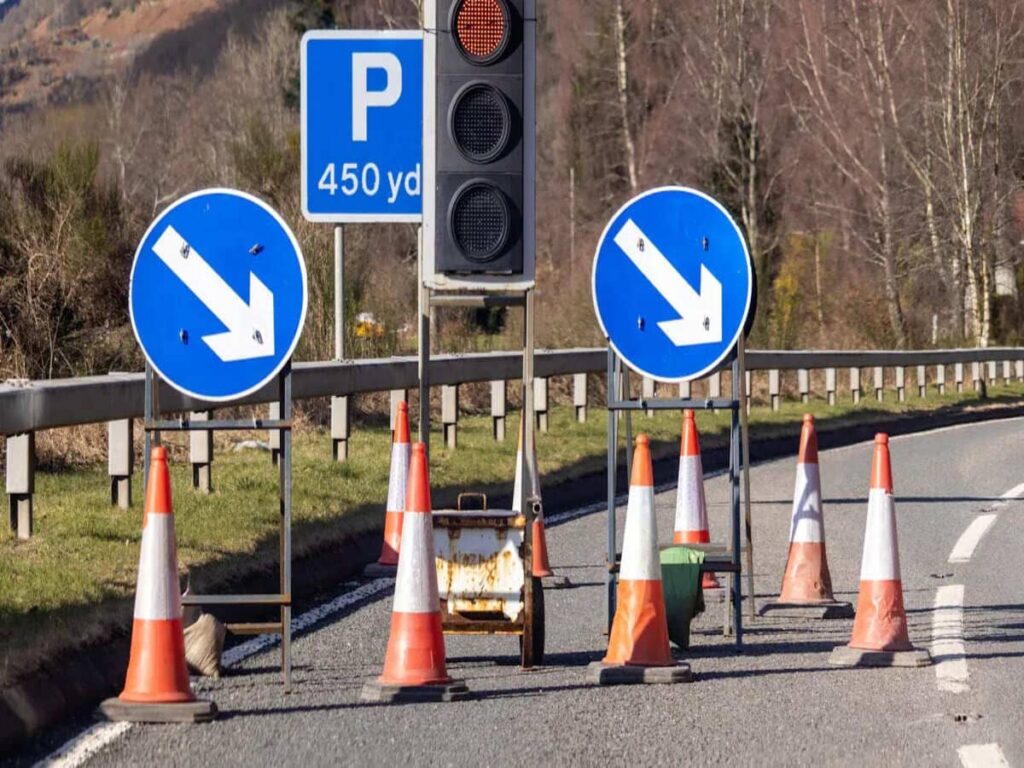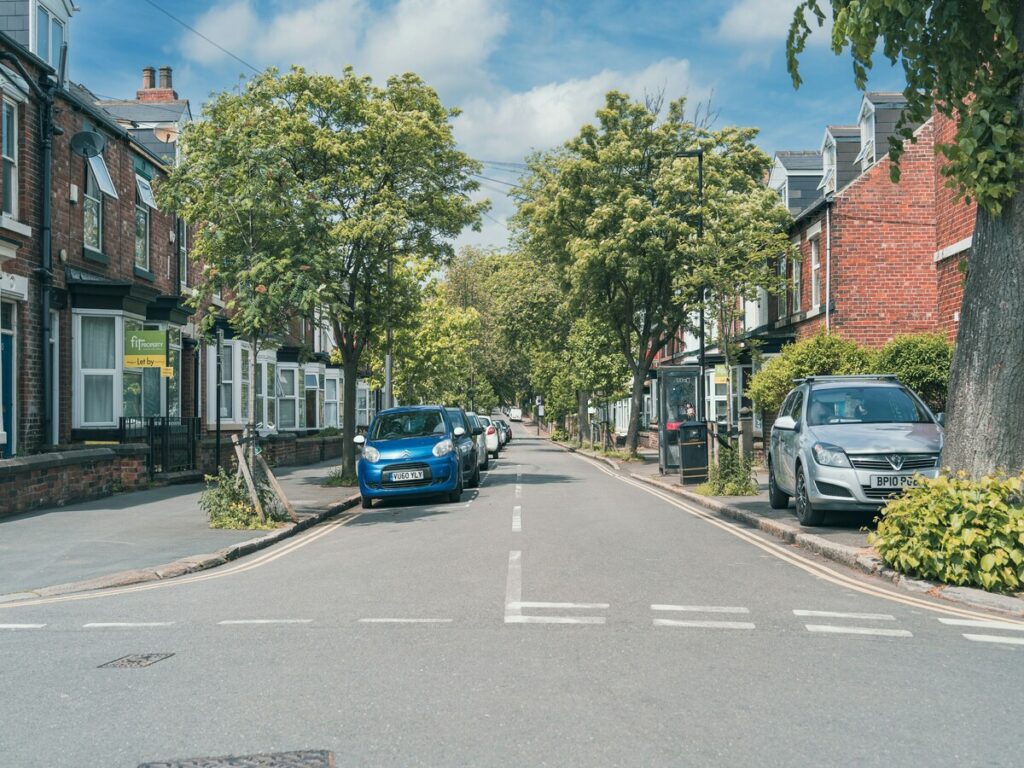
यूके में एक सड़क को अवरुद्ध करना केवल असुविधाजनक नहीं है - यह अवैध है. जैसे कानून राजमार्ग अधिनियम 1980 और यह सड़क यातायात अधिनियम 1988 सड़कों को सुरक्षित रखने के लिए मौजूद है और यातायात सुचारू रूप से बहती है. उदाहरण के लिए, अंतर्गत अनुभाग 137 राजमार्ग अधिनियम की, यह एक राजमार्ग को बाधित करने के लिए एक अपराध है. उसी प्रकार, अनुभाग 22 सड़क यातायात अधिनियम की एक खतरनाक स्थिति में एक वाहन को छोड़ने का दंड देता है. यहाँ कुछ प्रमुख प्रावधानों पर एक त्वरित नज़र है:
| कार्य | अनुभाग | प्रावधान |
|---|---|---|
| राजमार्ग अधिनियम 1980 | S171 | बिल्डर्स’ सामग्री को लाइसेंस दिया जाना चाहिए और लेन को बाधित नहीं कर सकता है. |
| राजमार्ग अधिनियम 1980 | S154 | स्थानीय अधिकारी वनस्पति के लिए नोटिस की सेवा कर सकते हैं. |
| राजमार्ग अधिनियम 1980 | S137 | एक राजमार्ग को बाधित करना एक अपराध है. |
| सड़क यातायात अधिनियम 1988 | एस 22 | एक खतरनाक स्थिति में एक वाहन को छोड़ने से जुर्माना मिलता है. |
| सड़क यातायात अधिनियम 1988 | एस 42 | एक वाहन द्वारा अनावश्यक बाधा पैदा करने से जुर्माना होता है. |
ट्रैफिक डेलिनेटर पोस्ट इन रुकावटों को रोकने में महत्वपूर्ण भूमिका निभाते हैं. वे वाहनों का मार्गदर्शन करते हैं, दृश्यता में सुधार करें, और इन कानूनों के अनुपालन को सुनिश्चित करने में मदद करें, सभी को सड़क पर सुरक्षित रखना. ऑप्टट्रैफ़िक के लिए महत्वपूर्ण आवश्यकता को समझता है टिकाऊ और विश्वसनीय यातायात, सुरक्षा और प्रदर्शन के उच्चतम मानकों को पूरा करने के लिए डिज़ाइन किए गए उत्पादों की पेशकश. साथ ऑप्टट्रैफ़िक यातायात सुरक्षा समाधान, सड़क सुरक्षा एक आवश्यकता से अधिक हो जाती है - यह ड्राइवरों और पैदल चलने वालों की रक्षा के लिए एक प्रतिबद्धता बन जाती है.
ब्रिटेन में सड़कों को अवरुद्ध करने के लिए कानूनी ढांचा
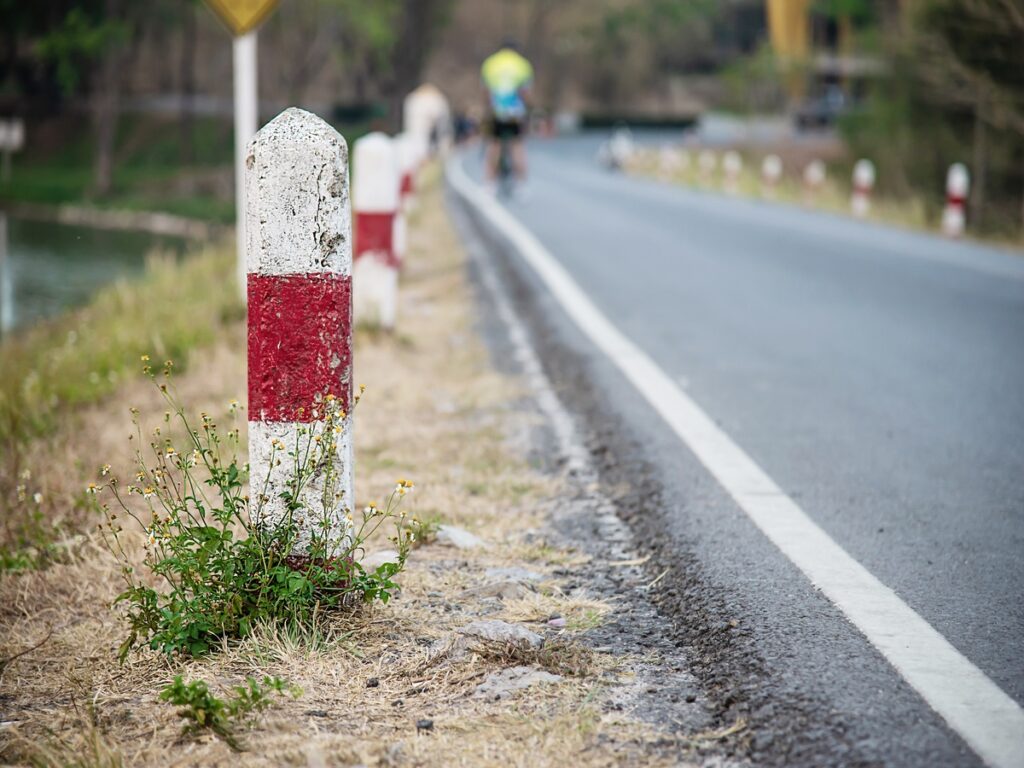
ब्रिटेन में सड़क रुकावट के लिए कानूनी ढांचे को समझना आपको आज्ञाकारी रहने और दंड से बचने में मदद करता है. चलो इसे तोड़ते हैं.
प्रासंगिक कानून और विनियम
राजमार्ग अधिनियम 1980
The राजमार्ग अधिनियम 1980 सड़क रुकावट को संबोधित करने वाले कानून के प्रमुख टुकड़ों में से एक है. अनुभाग 137 यह एक राजमार्ग के मुक्त मार्ग को अवरुद्ध करने के लिए अवैध बनाता है. यह कानून यह सुनिश्चित करता है कि सड़कें सभी के लिए सुलभ रहें. इसके अतिरिक्त, अनुभाग 171 सड़क पर सामग्री रखने से पहले बिल्डरों को लाइसेंस प्राप्त करने की आवश्यकता होती है, अनावश्यक रुकावटों को रोकना.
सड़क यातायात अधिनियम 1988
The सड़क यातायात अधिनियम 1988 एक महत्वपूर्ण भूमिका भी निभाता है. अनुभाग 22 एक खतरनाक स्थिति में एक वाहन को छोड़ने का दंड देता है, जबकि अनुभाग 42 वाहनों की वजह से अनावश्यक रुकावट को संबोधित करता है. इन प्रावधानों का उद्देश्य सुरक्षा के मुद्दों को कम करना और चिकनी यातायात प्रवाह बनाए रखना है.
| विधान | विवरण |
|---|---|
| नई सड़कें और स्ट्रीट वर्क्स एक्ट 1991 | सड़कों में अनावश्यक अवरोध पैदा करने पर प्रतिबंध लगाता है. |
| नगर पुलिस खंड अधिनियम 1847 | सार्वजनिक क्रॉसिंग और अच्छी तरह से संबोधन में रुकावटों को संबोधित करता है. |
| राजमार्ग अधिनियम 1980 | राजमार्गों के साथ मुक्त मार्ग की इच्छाशक्ति रुकावट का अपराधीकरण करता है. |
| सड़क पर चलने वाले वाहन (निर्माण और उपयोग) नियमों 1986 | वाहनों के साथ अनावश्यक रुकावट का कारण बनता है. |
| सड़क यातायात अधिनियम 1988 | खतरनाक स्थिति में वाहनों को छोड़ने और अनावश्यक बाधा पैदा करने वाले को संबोधित करते हैं. |
सड़क रुकावट के लिए दंड
जुर्माना और कानूनी परिणाम
यदि आप एक सड़क में बाधा डालते हैं, आप जुर्माना या अन्य दंड का सामना कर सकते हैं. उदाहरण के लिए, एक वाहन को एक खतरनाक स्थिति में धारा के तहत छोड़कर 22 सड़क यातायात अधिनियम की 1988 £ 60 जुर्माना हो सकता है. उसी प्रकार, अनुभाग के तहत एक वाहन द्वारा अनावश्यक रुकावट का कारण 42 £ 30 जुर्माना लगा सकते हैं. पुलिस अक्सर ऐसे अपराधों के लिए निश्चित पेनल्टी नोटिस जारी करती है.
अपवाद और विशेष परिस्थितियाँ
सभी सड़क अवरोध अवैध नहीं हैं. उदाहरण के लिए, नई सड़कों और स्ट्रीट वर्क्स एक्ट के तहत ठेकेदार 1991 बाधा को कम करना चाहिए, लेकिन यदि आवश्यक हो तो अस्थायी रूप से सड़कों को अवरुद्ध करने की अनुमति है. ऐसे मामले इवांस वी. रिवाल्वर (1971) दिखाएँ कि अदालतें रुकावट की तर्कशीलता पर विचार करती हैं.
सड़क रुकावट कानूनों का प्रवर्तन
स्थानीय अधिकारियों की भूमिका
स्थानीय अधिकारी सड़क रुकावट कानूनों को लागू करने में महत्वपूर्ण भूमिका निभाते हैं. वे अनुभाग के तहत अतिवृद्धि वनस्पति को हटाने के लिए नोटिस जारी कर सकते हैं 154 राजमार्ग अधिनियम की 1980. वे अनावश्यक रुकावटों को रोकने के लिए निर्माण गतिविधियों को भी विनियमित करते हैं.
सड़क रुकावट के मामलों में पुलिस की भागीदारी
पुलिस कई सड़क रुकावट मामलों को संभालती है, विशेष रूप से वाहन शामिल हैं. वे सड़क यातायात अधिनियम जैसे कानूनों पर भरोसा करते हैं 1988 और टाउन पुलिस क्लॉज़ एक्ट 1847 सुरक्षा के मुद्दों को संबोधित करने के लिए. अधिकारी जुर्माना जारी कर सकते हैं या अवरोध पैदा करने वाले वाहनों को हटा सकते हैं, यातायात संकेत विनियमों का अनुपालन सुनिश्चित करना.
सड़क अवरोधक के सामान्य परिदृश्य
आकस्मिक सड़क अवरोध
वाहन टूटना
वाहन टूटने के बारे में खाते हैं 11% शहरी क्षेत्रों में भीड़ की घटनाओं, द्वारा एक अध्ययन के अनुसार लंदन मेट्रोपॉलिटन पुलिस. अध्ययन करते हैं से ब्रिटेन परिवहन विभाग इंगित करें कि सड़क अवरोध एक अतिरिक्त का कारण बनते हैं 8% पीक आवर्स के दौरान देरी में. हालांकि यह एक बड़ी संख्या की तरह नहीं लग सकता है, यह महत्वपूर्ण है जब आप विचार करते हैं कि ये घटनाएं चरम यातायात घंटों के दौरान कितनी बार होती हैं. एक व्यस्त सड़क के बीच में एक रुकी हुई कार जल्दी से लंबी कतारों और निराश ड्राइवरों को जन्म दे सकती है.
अगर आपका वाहन टूट जाता है, व्यवधान को कम करने के लिए आपको तेजी से कार्य करना चाहिए. यदि संभव हो तो अपनी कार को सड़क के किनारे ले जाएं. अन्य ड्राइवरों को सचेत करने के लिए अपने खतरे की रोशनी चालू करें. यदि आप वाहन को स्थानांतरित नहीं कर सकते हैं, सड़क के किनारे सहायता या पुलिस से संपर्क करना जल्दी से बाधा को दूर करने के लिए आवश्यक है.
निर्माण और रखरखाव कार्य
रोडवर्क्स सड़क रुकावटों में एक और प्रमुख योगदानकर्ता हैं, के लिए जिम्मेदार 25.1% कंजेशन की घटनाओं का. निर्माण कर्मचारियों को अक्सर आवश्यक मरम्मत या उन्नयन को पूरा करने के लिए गलियों को ब्लॉक करने की आवश्यकता होती है. जबकि ये परियोजनाएं आवश्यक हैं, वे महत्वपूर्ण देरी पैदा कर सकते हैं, विशेष रूप से उच्च-ट्रैफ़िक क्षेत्रों में.
प्रभाव को कम करने के लिए, अधिकारी आमतौर पर ऑफ-पीक घंटों के दौरान रोडवर्क शेड्यूल करते हैं. वे कार्य क्षेत्र के आसपास वाहनों को सुरक्षित रूप से मार्गदर्शन करने के लिए ट्रैफ़िक डेलिनेटर्स का भी उपयोग करते हैं. ये उपाय श्रमिकों और ड्राइवरों की सुरक्षा सुनिश्चित करते हुए ट्रैफ़िक प्रवाह के कुछ स्तर को बनाए रखने में मदद करते हैं.
जानबूझकर सड़क अवरोधक
विरोध और प्रदर्शन
विरोध और प्रदर्शन कभी -कभी जानबूझकर सड़क रुकावटों को जन्म दे सकते हैं. जबकि शांतिपूर्ण विरोध एक कानूनी अधिकार है, बिना अनुमति के एक सड़क को अवरुद्ध करने से जुर्माना या गिरफ्तारी हो सकती है. अधिकारी अक्सर आयोजकों के साथ काम करते हैं जो विघटन को कम करते हैं. तथापि, सहज विरोध अभी भी महत्वपूर्ण देरी का कारण बन सकता है.
यदि आप सड़क को अवरुद्ध करने वाले एक विरोध का सामना करते हैं, धैर्यवान रहना और पुलिस द्वारा प्रदान किए गए किसी भी चक्कर का पालन करना सबसे अच्छा है.
अवैध पार्किंग और लोडिंग
अवैध पार्किंग सड़क रुकावटों का एक और लगातार कारण है. ड्राइववे के सामने या नो-पार्किंग ज़ोन के सामने खड़ी कारें ट्रैफ़िक को बाधित कर सकती हैं और सुरक्षा के खतरों का निर्माण कर सकती हैं. इन मामलों में, अधिकारियों ने स्विफ्ट कार्रवाई की. उदाहरण के लिए:
- "नो पार्किंग" साइन के साथ निजी संपत्ति पर खड़ी कारों को तुरंत टो किया जा सकता है.
- ड्राइववे तक पहुंच को अवरुद्ध करने वाले वाहनों को टिकट दिया जा सकता है या बाद में टो किया जा सकता है 24 घंटे.
- यदि कोई कार रोडवर्क के कारण पहुंच में बाधा डालती है, पुलिस एक टिकट जारी कर सकती है और रस्सा की व्यवस्था कर सकती है.
ये उपाय यह सुनिश्चित करते हैं कि सड़कें सभी के लिए सुलभ और सुरक्षित रहें.
व्यस्त क्षेत्रों में अवैध पार्किंग से निपटने के लिए थक गया? हमारा अत्यधिक दृश्यमान ट्रैफ़िक डेलिनेटर्स अनधिकृत पार्किंग को रोकने और उच्च-मांग वाले क्षेत्रों में यातायात प्रवाह में सुधार करने में मदद कर सकते हैं. हमसे संपर्क करें अपने प्रोजेक्ट के लिए अनुकूलित समाधान और थोक आदेशों के लिए.
कैसे प्राधिकरण इन परिदृश्यों को संबोधित करते हैं
तत्काल कार्रवाई की गई
जब एक सड़क रुकावट होती है, अधिकारी इस मुद्दे को हल करने के लिए जल्दी से कार्य करते हैं. वाहन के टूटने के लिए, पुलिस या सड़क के किनारे सहायता टीम अक्सर कार को टो करने या मरम्मत प्रदान करने के लिए पहुंचती है. अवैध पार्किंग के मामलों में, अधिकारी टिकट जारी करते हैं या रस्सा करने की व्यवस्था करते हैं. विरोध के दौरान, पुलिस सड़क को साफ करने के लिए यातायात को पुनर्निर्देशित कर सकती है या आयोजकों के साथ बातचीत कर सकती है.
दीर्घकालिक समाधान और निवारक उपाय
भविष्य की रुकावटों को रोकने के लिए, अधिकारी कई रणनीतियों को लागू करते हैं. अवैध पार्किंग के लिए, वे चिह्नित ज़ोन को लेबल कर सकते हैं “गाड़ी को खींच कर ले जाने वाला क्षेत्र"ड्राइवरों को रोकने के लिए. निर्माण परियोजनाओं के लिए, वे वाहनों को सुरक्षित रूप से मार्गदर्शन करने के लिए ट्रैफ़िक डेलिनेटर्स और स्पष्ट साइनेज का उपयोग करते हैं. सार्वजनिक जागरूकता अभियान भी एक भूमिका निभाते हैं, सड़कों को अवरुद्ध करने के परिणामों के बारे में ड्राइवरों को शिक्षित करना.
तत्काल और दीर्घकालिक दोनों चिंताओं को संबोधित करके, अधिकारी यातायात को बढ़ाने और सार्वजनिक सुरक्षा सुनिश्चित करने में मदद करते हैं.
यातायात प्रबंधन में ट्रैफिक डेलिनेटर पोस्ट की भूमिका
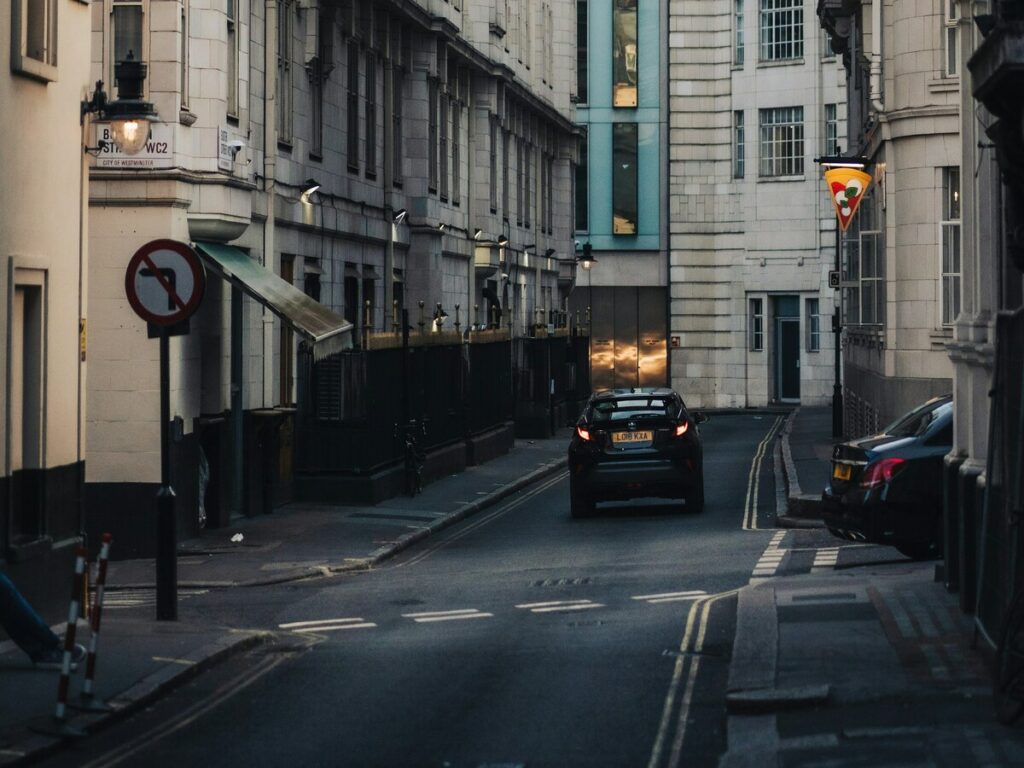
ट्रैफिक डेलिनेटर्स क्या हैं?
परिभाषा और उद्देश्य
ट्रैफ़िक डेलिनेटर्स ट्रैफ़िक कंट्रोल में आवश्यक उपकरण हैं. वे सीमाओं को चिह्नित करके और यातायात प्रवाह को निर्देशित करके वाहनों और पैदल चलने वालों का मार्गदर्शन करने में मदद करते हैं. आप अक्सर जटिल या कम-दृश्यता स्थितियों वाले क्षेत्रों में ट्रैफ़िक डेलिनेटर पोस्ट देखेंगे, निर्माण क्षेत्र या तेज घटता की तरह. उनके चमकीले रंग और चिंतनशील सतह उन्हें अत्यधिक दिखाई देते हैं, यहां तक कि खराब मौसम या कम रोशनी में. ये विशेषताएं डेलिनेटर्स को ट्रैफ़िक शांत उपचार और प्रभावी ट्रैफ़िक प्रबंधन का एक महत्वपूर्ण हिस्सा बनाती हैं.
ट्रैफ़िक डेलिनेटर्स के प्रकार
ट्रैफ़िक डेलिनेटर्स की एक विस्तृत विविधता है, प्रत्येक को विशिष्ट उद्देश्यों के लिए डिज़ाइन किया गया है. यहाँ कुछ सामान्य प्रकार हैं:
- ग्राउंड माउंटेड डेलिनेटर्स: सीधे फुटपाथ में स्थापित, कम दृश्यता वाले क्षेत्रों के लिए आदर्श.
- पोर्टेबल डेलिनेटर्स: हल्के और स्थानांतरित करने में आसान, अक्सर निर्माण क्षेत्रों में उपयोग किया जाता है.
- डी-टॉप डेलिनेटर्स: गलियों और घटता को चिह्नित करने के लिए महान, दृश्यता बढ़ाना.
- चैनलिज़र्स: कार्य क्षेत्रों में या घटनाओं के दौरान यातायात को निर्देशित करने के लिए उपयोग किया जाता था.
- चिंतनशील परिसीनीक: रात में बेहतर दृश्यता के लिए चिंतनशील सतहों से लैस.
- सुरक्षा ड्रम: टिकाऊ और अत्यधिक दिखाई देते हैं, उच्च जोखिम वाले क्षेत्रों के लिए बिल्कुल सही.
प्रत्येक प्रकार सड़क की सुरक्षा और चिकनी यातायात प्रवाह सुनिश्चित करने में एक अनूठी भूमिका निभाता है.
ट्रैफिक डेलिनेटर पोस्ट सड़क रुकावटों को कैसे रोकते हैं
मार्गदर्शक यातायात प्रवाह
ट्रैफ़िक डेलिनेटर पोस्ट दृश्य बाधाओं के रूप में कार्य करते हैं जो सड़क की स्थिति के माध्यम से ड्राइवरों का मार्गदर्शन करते हैं. वे विशेष रूप से निर्माण क्षेत्रों या लेन में कटौती वाले क्षेत्रों में उपयोगी हैं. स्पष्ट रूप से सीमाओं को चिह्नित करके, ट्रैफिक डेलिनेटर पोस्ट भ्रम को रोकने और दुर्घटनाओं के जोखिम को कम करने में मदद करते हैं. ड्राइवर आसानी से डेलिनेटर्स का पालन कर सकते हैं, चिकनी यातायात प्रवाह और कम रुकावटों को सुनिश्चित करना.
दृश्यता और सुरक्षा बढ़ाना
डेलिनेटर्स को बाहर खड़े होने के लिए डिज़ाइन किया गया है. उनके चमकीले रंग और चिंतनशील सतहों को उन्हें हाजिर करना आसान है, यहां तक कि कम-प्रकाश या प्रतिकूल मौसम की स्थिति में भी. कुछ भी एलईडी रोशनी या चिंतनशील धारियों की सुविधा है, जो दूर से दृश्यता में सुधार करते हैं. यह बढ़ी हुई दृश्यता पैदल यात्री सुरक्षा और कार्य क्षेत्र सुरक्षा में एक महत्वपूर्ण भूमिका निभाती है, दुर्घटनाओं की संभावना को कम करना.
अपने अगले प्रोजेक्ट के लिए विश्वसनीय ट्रैफ़िक डेलिनेटर पोस्ट की तलाश में? हमारे टिकाऊ देखने के लिए हमारे स्टोर पर जाएँ, अधिकतम सुरक्षा और यूके रोड नियमों के अनुपालन के लिए डिज़ाइन किए गए चिंतनशील ट्रैफ़िक डेलिनेटर्स. अब आदेश दें और सड़क सुरक्षा सुनिश्चित करें.
कार्रवाई में ट्रैफ़िक डेलिनेटर्स के वास्तविक दुनिया के उदाहरण
यूके से केस स्टडीज
शहरी क्षेत्र और भीड़भाड़ वाली सड़कें
लंदन और मैनचेस्टर जैसे हलचल वाले शहरों में, ट्रैफिक डेलिनेटर पोस्ट भीड़ को प्रबंधित करने में महत्वपूर्ण भूमिका निभाते हैं. आपने शायद उन्हें रोडवर्क या लेन क्लोजर के दौरान देखा है. वे तंग स्थानों के माध्यम से वाहनों का मार्गदर्शन करते हैं, यह सुनिश्चित करना कि ड्राइवर ट्रैक पर रहें. उदाहरण के लिए, दौरान लंदन मैराथन, ट्रैफिक डेलिनेटर पोस्ट वाहनों को हिलाते हुए धावकों के लिए अस्थायी लेन बनाने में मदद करते हैं. उनके बिना, इस घटना से सड़कों पर अराजकता होगी.
ग्रामीण सड़कें और राजमार्ग
ग्रामीण सड़कों और राजमार्गों पर, ट्रैफ़िक शंकु उतना ही महत्वपूर्ण है. वे अक्सर रखरखाव के काम या दुर्घटनाओं के दौरान यातायात को सुरक्षित रूप से पुनर्निर्देशित करने के लिए उपयोग किए जाते हैं. एक धूमिल देश सड़क पर ड्राइविंग की कल्पना करें. चमकीले रंग के ट्रैफ़िक डेलिनेटर पोस्ट आपको आगे के खतरों के लिए सचेत कर सकते हैं, एक गिरे हुए पेड़ या एक निर्माण क्षेत्र की तरह. राजमार्गों पर, वे लेन के बंद होने और वाहनों को खतरनाक क्षेत्रों से दूर रखने के लिए आवश्यक हैं.
यातायात प्रबंधन की सफलता की कहानियां
ट्रैफिक डेलिनेटर पोस्ट के साथ दुर्घटनाओं को रोकना
ट्रैफिक डेलिनेटर पोस्ट ने दुर्घटनाओं को रोककर अनगिनत जान बचाई है. बर्मिंघम के पास एक मामले में, डेलिनेटर पोस्ट की एक श्रृंखला ने एक खराब रोशनी वाली सड़क पर एक तेज वक्र को चिह्नित किया. ड्राइवर धीमा हो गए, टकराव के जोखिम को कम करना. ये सरल उपकरण सड़कों को सुरक्षित रखने में एक बड़ा अंतर बना सकते हैं.
घटनाओं के दौरान यातायात प्रवाह में सुधार
संगीत समारोहों या खेल खेलों जैसे बड़े कार्यक्रम अक्सर यातायात को बाधित करते हैं. ट्रैफ़िक डेलिनेटर पोस्ट इन स्थितियों को प्रभावी ढंग से प्रबंधित करने में मदद करते हैं. पर ग्लेस्टनबरी फेस्टिवल, उदाहरण के लिए, डेलिनेटर पोस्ट पार्किंग क्षेत्रों में वाहनों को गाइड करते हैं और पैदल यात्रियों को सुरक्षित रखते हैं. वे चिकनी यातायात प्रवाह सुनिश्चित करते हैं, यहां तक कि हजारों उपस्थित लोगों के साथ.
वास्तविक दुनिया के अनुप्रयोगों से सीखे गए सबक
कार्यान्वयन के लिए सर्वोत्तम अभ्यास
ट्रैफ़िक डेलिनेटर पोस्ट का उपयोग करने के लिए प्रभावी रूप से योजना की आवश्यकता होती है. आपको उन्हें सही अंतराल पर रखने और यह सुनिश्चित करने की आवश्यकता है कि वे दिखाई दे रहे हैं. चिंतनशील ट्रैफ़िक डेलिनेटर पोस्ट रात के उपयोग के लिए सबसे अच्छा काम करते हैं. शंकु के साथ अस्थायी संकेत ड्राइवरों के लिए अतिरिक्त मार्गदर्शन प्रदान कर सकते हैं.
चुनौतियां और समाधान
एक चुनौती यह सुनिश्चित कर रही है कि ड्राइवर ट्रैफिक डेलिनेटर्स का सम्मान करें. कुछ उन्हें अनदेखा कर सकते हैं, दुर्घटनाओं का कारण बन रहा है. इसे हल करने के लिए, अधिकारी अक्सर चिंतनशील स्ट्रिप्स या एलईडी लाइट्स के साथ शंकु का उपयोग करते हैं. इन सुविधाओं से उन्हें याद करना मुश्किल हो जाता है, गरीब मौसम में भी.
ब्रिटेन में एक सड़क को अवरुद्ध करना केवल कानून के खिलाफ नहीं है - यह सुरक्षा और यातायात प्रवाह को बाधित करता है. राजमार्ग अधिनियम जैसे कानून 1980 और सड़क यातायात अधिनियम 1988 ऐसे कार्यों के लिए स्पष्ट दंड की रूपरेखा. आप नियमों को समझकर और ट्रैफ़िक डेलिनेटर पोस्ट जैसे उपकरणों का उपयोग करके इन मुद्दों से बच सकते हैं.
ट्रैफ़िक डेलिनेटर पोस्ट गाइड वाहनों से अधिक करते हैं. वे दृश्यता बढ़ाते हैं, दुर्घटनाओं को कम करना, और विभिन्न स्थितियों के अनुकूल. कई पुनर्नवीनीकरण सामग्री से बने हैं, उन्हें पर्यावरण के अनुकूल और लंबे समय तक चलने वाला. इन उपकरणों का उपयोग करके, आप सड़क सुरक्षा में सुधार करने में मदद करते हैं, यातायात कानूनों का पालन करें, और स्थायी प्रथाओं का समर्थन करें.
अक्सर पूछे जाने वाले प्रश्न
ब्रिटेन में एक सड़क को अवरुद्ध करने के लिए क्या माना जाता है?
एक सड़क को अवरुद्ध करने का अर्थ है यातायात या पहुंच के मुक्त प्रवाह में बाधा डालने का मतलब है. इसमें एक खतरनाक स्थान पर एक वाहन को छोड़ना शामिल हो सकता है, सड़क पर वस्तुओं को रखना, या अनावश्यक देरी का कारण. यहां तक कि अस्थायी अवरोध भी, अवैध पार्किंग की तरह, सड़क अवरुद्ध के रूप में गिनती.
क्या सड़क रुकावट कानूनों के लिए कोई अपवाद हैं?
हाँ, कुछ अपवाद मौजूद हैं. उदाहरण के लिए:
- आपातकालीन वाहन घटनाओं के दौरान सड़कों को अवरुद्ध कर सकते हैं.
- उचित परमिट वाले निर्माण दल अस्थायी रूप से सड़कों को बाधित कर सकते हैं.
- अधिकारियों द्वारा पूर्व-अनुमोदित होने पर विरोध प्रदर्शन सड़कों को अवरुद्ध कर सकते हैं.
यदि आपकी कार सड़क पर टूट जाती है तो आपको क्या करना चाहिए?
यदि संभव हो तो अपनी कार को साइड में ले जाएं. दूसरों को चेतावनी देने के लिए अपनी खतरा रोशनी चालू करें. यदि आप इसे स्थानांतरित नहीं कर सकते, कॉल रोडसाइड असिस्टेंस या पुलिस. अभिनय जल्दी से व्यवधान को कम करता है और सभी को सुरक्षित रखता है.
ट्रैफिक डेलिनेटर पोस्ट सड़क सुरक्षा में कैसे सुधार करते हैं?
ट्रैफिक डेलिनेटर पोस्ट ट्रिकी क्षेत्रों के माध्यम से वाहनों और पैदल यात्रियों का मार्गदर्शन करते हैं. उनके चमकीले रंग और चिंतनशील सतह उन्हें खराब परिस्थितियों में दिखाई देते हैं. ट्रैफिक डेलिनेटर पोस्ट भ्रम को कम करते हैं, दुर्घटनाओं को रोकें, और चिकनी यातायात प्रवाह सुनिश्चित करें.
क्या आप गलती से सड़क को अवरुद्ध करने के लिए जुर्माना लगा सकते हैं?
हाँ, यहां तक कि आकस्मिक अवरोधों से जुर्माना हो सकता है. उदाहरण के लिए, एक टूटी-फूटी कार को एक खतरनाक स्थान पर छोड़ने से जुर्माना हो सकता है. हमेशा सड़क या सतर्क अधिकारियों को साफ करने के लिए तत्काल कार्रवाई करें.
🛑 बख्शीश: अप्रत्याशित स्थितियों को प्रभावी ढंग से संभालने के लिए हमेशा अपने वाहन में आपातकालीन संपर्क नंबर और खतरे के संकेत ले जाएं.
